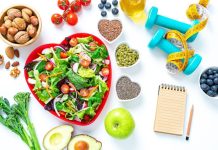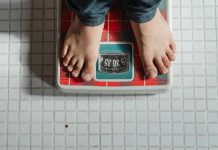This article discusses the realtionship between exercise intensity and weight loss, and outlines exercise options.
Those of us who have been in the exercise and weight loss game for awhile know that long-duration, low-intensity cardio is the best way to burn fat. But while it’s true that fat is a slow-burn fuel, spending hours on the treadmill each day to drop a few pounds is not realistic for most of us. The good news is that you can shorten your workout and get the same or better results when you turn up the heat.
Table of Contents
Total Calories vs. Fat Metabolism
One pound of fat is worth 3500 calories, so it stands to reason that burning an extra 500-1000 calories per day will add up to a loss of 1-2 pounds per week, the amount endorsed as “safe” by the Centers for Disease Control and Prevention.
But if your primary strategy for burning fat is long-duration, low-intensity cardio, you will have to walk about 10 miles per day to lose two pounds per week. At 4 mph, that amounts to 2 ½ hours of non-stop cardio daily. However, working harder and smarter at a higher intensity will reap results more quickly.
Anaerobic Interval Training
A highly effective way to increase total caloric burn is interval training. After warming up for 5-10 minutes, intersperse high-intensity intervals of 1-2 minutes between low-intensity cardio intervals of 3-5 minutes. For example, walk 3 minutes, then increase your speed and run full-out for 2 minutes. Or jog easy for 3 minutes, then do high-intensity jumping jacks for one minute.
The idea is to exceed your anaerobic threshold during the high-intensity intervals by pushing yourself to the max. Not only will you burn more total calories, but you will improve your cardiovascular capacity, enabling you to work out at higher intensities for longer periods of time.
Anaerobic Weight Training
Resistance training builds muscle and increases bone density, resulting in a higher basal metabolic rate, or BMR, and a greater daily caloric burn. But to amp up caloric burn during your workout, you need to push yourself well beyond your comfort zone, working each set to volitional fatigue.
That means you work until you cannot do another repetition with good form. If you have been doing sets of 10-15 reps, stopping when your muscles start to “burn,” you are selling yourself short. The burn is just the beginning of the developmental phase of your set. Using a weight with which you can barely do 8 reps and pushing through the discomfort to volitional fatigue will keep you in the high-calorie anaerobic zone and boost your BMR.
Creating a Caloric Deficit
To lose weight, you need to create a caloric deficit, meaning calories burned must exceed calories ingested. However, anaerobic training burns glycogen, your storage form of sugar, for fuel. To power high-intensity workouts, you must replenish glycogen stores after your workout by eating carbohydrates.
Stick to complex carbs like fresh whole fruits and vegetables and whole grains. Avoid simple sugars like high fructose corn syrup. Shop the perimeter of the grocery store for whole natural food and lean proteins. Steer clear of processed and genetically modified foods. To control appetite and speed weight loss, drink at least half your body weight in ounces of pure filtered water daily.
References:
- Centers for Disease Control and Prevention: Losing Weight: What is Healthy Weight Loss? http://www.cdc.gov/healthyweight/losing_weight/index.html
- Massachusetts Institute of Technology: Weight Management Strategies: Weight Loss http://web.mit.edu/athletics/sportsmedicine/wcrwtloss.html



